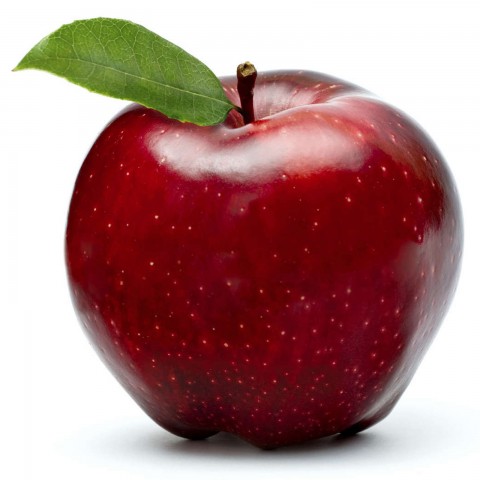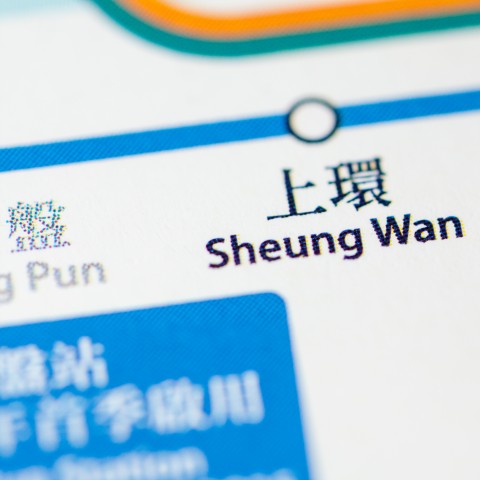
Learning a new language isn’t easy; it takes time and effort. Many Korean learners are too afraid to start speaking Korean because they’re scared of making mistakes. But it’s important to understand that you can’t improve your Korean if you don’t keep trying. It’s okay to make mistakes—it’s how you become better at Korean!
Today, we’ll introduce the five most common mistakes Korean learners make. We’ll focus on Korean language mistakes in grammar, pronunciation, and vocabulary. In addition, we’ll give you information on how you can improve your Korean and make fewer mistakes.
 Table of Contents
Table of Contents
- Korean Pronunciation Mistakes – 합니다 (hamnida) and 같이 (gachi)
- Vocabulary Word Mistakes – 이 (i) / 가 (ga) and 은 (eun) /는 (neun)
- Homophones- 낳다 (nata) vs. 낫다 (natda) vs. 낮다 (natda)
- Korean Grammar Mistakes – Verb Stem + (는)구나 ([neun]guna)
- Other Mistakes – 생일 (saengil) vs. 생신 (saengsin)
- How KoreanClass101 Can Help You with Korean
1. Korean Pronunciation Mistakes – 합니다 (hamnida) and 같이 (gachi)
The two most common Korean mistakes regarding pronunciation are to mispronounce the words 합니다 (hamnida) and 같이 (gachi). Keep reading to learn how to avoid making these mistakes!
합니다 (hamnida)
Many Korean learners pronounce 합니다 (hamnida) as “hap-ni-da.” However, when you listen closely to native speakers, it’s pronounced “ham-ni-da.” It may sound strange to you because it sounds like 함니다 (hamnida), though this is incorrect.
Just remember that this is a special case where you need to memorize the correct pronunciation. And pronouncing it correctly will make your life a lot easier. Why? Try saying “hap-ni-da” and “ham-ni-da.” Did you notice that “hamnida” is a lot easier and faster to say?
같이 (gachi)
Now let’s look at the romanization of 같이 (gachi). Do you know what this word means? That’s right, it means “together.”
While reading each of the following words and trying to pronounce them, it will sound like “gat-ee.” However, the correct way to pronounce this word is “ga-chi.”
Let’s practice its pronunciation with these two sentences.
- 그 부분은 다뤘다고 생각합니다.
Geu bubuneun darwotdago saenggakamnida.
“I think we have covered that.”
- 다시 뵙기를 기대합니다.
Dasi boepgireul gidaehamnida.
“I look forward to seeing you again.”

2. Vocabulary Word Mistakes – 이 (i) / 가 (ga) and 은 (eun) /는 (neun)
Korean learners struggle to understand Korean particles because many of these particles do not translate directly to English. Let’s take a look at the subject markers 이 (i) and 가 (ga) and the topic markers 은 (eun) and 는 (neun).
If you want to know when you should use a subject marker versus a topic marker in a sentence, think of the topic markers (eun/neun) as meaning “as far” or “when it comes to.” This will help you construct Korean sentences.
If the sentence makes sense in your head when you plug in “as far” or “when it comes to,” then use the topic marker. If not, then use the subject marker.
Examples:
- 겨울에는 딸기가 최고지.
Gyeoureneun ttalgiga choegoji.
“When it comes to winter, strawberries are the best.”
- 저는…
jeoneun…
“as for me…”
Here are a couple of great resources on KoreanClass101.com to help you better understand how to use topic marking particles:
- Learn how to use the topic marking particles 는 (neun) and 은 (eun).
- How Do I Use the Topic Marking Particles 은 (eun) and 는 (neun)?
3. Homophones- 낳다 (nata) vs. 낫다 (natda) vs. 낮다 (natda)
Other common mistakes in Korean have to do with using the wrong word because it sounds similar to another one. These three words sound very similar, and a lot of Korean learners struggle to choose the right word. In fact, even native Korean speakers struggle to differentiate between 낳다 (nata) and 낫다 (natda). So let’s take a look at each word and learn when to use them.
낳다 (nata) vs. 낫다 (natda) vs. 낮다 (natda)
| Korean words | Romanization | Meaning |
| 낳다 | nata | “To give birth” |
| 낫다 | natda | “To recover from something” |
| 낮다 | natda | “To be low” |
Most people are able to differentiate between 낫다 (natda) and 낮다 (natda) without much of a problem. However, a lot of people—even native speakers—get confused when it comes to 낳다 (nata) and 낫다 (natda).
The best way to remember is this: When you want to say “someone gave birth,” then the 받침 (badchim) has to be the last 받침 (badchim) in the order, which is ㅎ.
Examples:
- 다리의 상처가 아직 낫지 않았어.
Dariui sangcheoga ajik natji anasseo.
“The wound on my leg is not healed yet.”
- 수잔은 어젯밤에 딸을 낳았다.
Sujaneun eojetbame ttareul naatda.
“Susan gave birth to a daughter last night.”
Practice:
Let’s say that your friend got into an accident and needs to stay in the hospital for a few days. You want to write “Get well soon ” in Korean. Which of these should you write?
- 빨리 낫길 바래. (Ppalli natgil barae.)
- 빨리 낳길 바래. (Ppalli nakil barae.)
The answer is: 빨리 낫길 바래. (Ppalli natgil barae.)
Many young Koreans make mistakes with these words, so I hope you don’t make the same mistakes!

Oops, I keep making the same mistakes again
4. Korean Grammar Mistakes – Verb Stem + (는)구나 ([neun]guna)
Let’s say that you and your friend are trying to solve mathematical questions. While marking your friend’s paper, you notice that your friend made a lot of the same mistakes over and over. How do you say “You just made a mistake again” in this situation?
When you’re certain about what you’re saying, there’s a grammatical structure that you need to learn.
Grammar rule:
| Verb Stem + (는)구나 ([neun]guna) establishes a speaker’s certainty. Rule #1: We attach 구나 (guna) to the past verb stem. Rule #2: We attach 는구나 (neunguna) to the present verb stem. |
Let’s do some exercises:
Do you know the meaning of 틀렸다 (teullyeotda)? It means “was wrong” or “made a mistake.” To say “(You) made a mistake,” you need to remove 다 (da) and attach 구나 (guna). The whole sentence becomes: 너 틀렸구나 (teulryeottguna).
Here’s another example:
걸렸다 (geollyeotda) means “to be busted.” To say “(You) are busted,” remove 다 (da) and attach 구나 (guna). The whole sentence becomes: (너) 걸렸구나! ([Neo] geollyeotguna!). This expression is commonly used among friends.
Examples:
- 이번에 네 계산은 틀렸구나!
틀렸 (teullyeot) + 구나 (guna) => 틀렸구나 (teullyeotguna)
Ibeone ne gyesaneun teullyeotguna!
“Your calculations are off this time!”
- 너 도둑질하다가 걸렸구나!
걸렸 (geollyeot) + 구나 (guna) => 걸렸구나 (geollyeotguna)
Neo dodukjilhadaga geollyeotguna!
“You got caught while you were stealing something!”
We also use it with the pattern: noun + 이구나 (iguna), as in 팀이구나! (Timiguna!) meaning “You are Tim!”
Example:
- 존이구나!
존 (Jon) + 이구나 (iguna) => 존이구나 (Joniguna)
Joniguna!
“You are John!”
There’s another very similar expression: VST + 군(요)’ (gun[yo]). It also expresses the speaker’s certainty, but we use it in formal situations.
Example:
- 그렇군요. 알겠습니다.
그렇다 (geureota) + 군요 (gunyo) => 그렇군요 (geureokunyo)
Geureokunyo. Algetseumnida.
“I see. I understand.”

Happy birthday, Grandma!
5. Other Mistakes – 생일 (saengil) vs. 생신 (saengsin)
Social rank is very important in Korean culture. As a result, it’s deeply ingrained in the Korean language.
You’ve already studied the different politeness levels of speech in Korean. In this section, we’ll focus on specific words you should use depending on social rank. Koreans use different words for people of varying social ranks, and depending on who you’re talking to, there are many words for expressing respect.
Let’s take a look at the word “birthday.” You’ve probably learned that it’s 생일 (saengil) in Korean. But did you know that there’s another word for “birthday” that you should use for people who are older than you or of a higher rank?
Let’s say that you want to say “happy birthday” to your mother. The polite form of 생일 (sangil) is 생신 (sangsin); therefore, 생신 축하드립니다. (Saengsin chukadeurimnida.) is the correct way to wish your mother a happy birthday.
Let’s take a look at different ways to wish someone a happy birthday:
- [To your friends] 축하해! (Chukahae!) – “Congratulations!”
- [To your friends] 생일 축하해! (Saengil chukahae!) – “Happy birthday!”
- [To elders] 생신 축하드립니다. (Saengsin chukadeurimnida.) – “Happy birthday!”
- [Casual-formal] 생신 축하드려요. (Saengsin chukadeuryeoyo.) – “Happy birthday!”
If you’re not familiar with the different levels of politeness in Korean, check out “Polite, Conversational Korean for Beginners.” It includes 130 free lessons that will teach you how to introduce yourself in a polite and casual way to native speakers.
KoreanClass101 also has a blog post that dives into different honorific titles. Check out “Honorific Titles: Oppa, Unni, Hyung, Nuna & More” to understand different ways you can address someone, and to gain some cultural insights.

Study at your own pace with KoreanClass101
6. How KoreanClass101 Can Help You with Korean
Being fluent in a language takes time and requires your long-term effort. Most language-learners feel embarrassed when they make mistakes, but it’s important to understand that making mistakes is part of the learning process. Also, native speakers are more than happy to correct your mistakes, so be brave!
In this article, we looked at five of the most common mistakes Korean learners make. Want to read more about how to learn Korean faster? Here are three pages that you can check out in your spare time:
- Learn how mistakes help you learn faster
- Top 5 Korean Pronunciation Mistakes to Avoid
- The Top 5 Language-Learning Mistakes Most Smart People Make
Have you recently made Korean mistakes? Share your story and what kind of Korean mistake you made. It will help us understand more about what kind of Korean mistakes people make, and it will also help other Korean learners.
Good luck with your Korean studies. Feel free to check out our website, KoreanClass101.com, for more free study materials and more!

A Couple’s Paradise: Christmas in South Korea
Did you know that South Korea has twelve days each year that celebrate (or mourn over, in the case of Black Day) love? And three of them are in December!
While in Western cultures, people tend to associate Christmas with the birth of Jesus and time with family, most South Koreans perceive Christmas as a day for celebrating romance. In this article, you’ll learn about common South Korean traditions for Christmas, explore some of the most popular activities, and pick up some new vocabulary.
Ready? Let’s go.

1. A South Korean Christmas

Like many countries, South Korea has its own version of 크리스마스 (keuriseumaseu), or “Christmas,” celebrated each year on December 25. Christmas Day in South Korea has many similarities with that in other countries, though there are a few key differences.
In South Korea, Christmas is less about the traditional story of Jesus’s birth and more about the holiday’s commercial aspects. The holiday is also heavily associated with romance and couples, as opposed to family.
Considering South Korea’s fairly large Christian population (anywhere from a quarter to a third of the population), some people view the holiday in its traditional religious light—though still not to the extent that people in the U.S. or many European nations do.
2. Christmas Traditions in South Korea
South Koreans employ many of the same traditions and celebrations for Christmas as other countries do, though with a unique Korean twist.
Valentine’s Day?
In most countries, Christmas means time with family. Well, the average Christmas celebration in South Korea is actually spent with one’s boyfriend or girlfriend, and not one’s family. For this reason, Christmas is often viewed as another ‘Valentine’s Day.’
As advertising increases and special deals are made available, people spend a lot of time looking for the perfect 선물 (seonmul), or “present,” for their significant other. Popular gifts include romantic items, such as chocolate, wine glasses, or lingerie. In addition to gift-giving, couples often go on a romantic date together. This often consists of a meal at a nice restaurant, time spent doing outdoor winter activities, and a night spent in a hotel. Of course, some couples opt to stay indoors during Christmas, snuggled in front of the 벽난로 (byeognanro), or “fireplace.”
The romantic nature of a South Korean Christmas is so prominent that people tend to feel lonely or sad if they have to spend the holiday as a single person.
- → What gift do you want the most this holiday season? Check out our vocabulary list and let us know in the comments!
→ Planning a date for Christmas? Here are the Common Korean Phrases You’ll Need for a Date.
Christmas Food
The Christmas food in South Korea is far different from what people in the U.S. and other countries are used to.
Instead of having special food items or meals for the holiday, many Koreans indulge in the popular wintertime foods. These are often found in stalls while walking the streets or in restaurants. These foods include plenty of porridges, soups, spicy foods, and bready foods. You can sometimes find Western-style Christmas meals in certain restaurants, especially those in larger cities.
- → Is your mouth watering already? Learn more about what to expect in our article on the Top 10 Must-Try Korean Street Foods in Seoul!
Decorations
As for Christmas decorations in South Korea, you’ll mainly find these in public areas and not in residential areas. Walking through the cities or towns, you’ll find many businesses, restaurants, and other public locations decorated with Christmas lights, Christmas trees, and the like.
Other Traditions
In South Korea, many children are told about 산타 클로스 (santa keulloseu), or “Santa Claus.” Like in Western cultures, it’s said that Santa will bring gifts to the good children and not to the bad children. Many children call him 산타할아버지 (santaharabeoji), which means “Grandfather Santa.”
Similarly, South Korean children grow up singing about 루돌프 사슴코 (rudolpeu saseumko), or “Rudolph the Red-Nosed Reindeer,” during Christmas. A few other Western Christmas songs are popular here, though most of the time, radios play Christmas-themed Korean pop music.
Some children enjoy playing in the 눈 (nun), or “snow,” if they were lucky enough to have a Christmas snow.
3. Seoul At Christmastime
Not surprisingly, Seoul is a hotspot during the Christmas season. Tons of top-notch restaurants, bars, and shops can be found here, and Christmas is the perfect occasion to check them out with friends—as long as you don’t mind crowds!
A few popular areas include Kang Nam, Shin Chon, Jam Sil, and Ap Gu Jeong. Make sure to visit one or two of these places for a great time!
- → In case you have your sights set elsewhere, we have a handy list of South Korea’s Top Tourist Attractions. Check it out!
4. Essential Vocabulary for Christmas

Let’s review some of the key vocabulary words from this article!
- 눈 (nun) – “snow” [n]
- 눈송이 (nunsongi) – “snowflake” [n]
- 크리스마스 (keuriseumaseu) – “Christmas” [n]
- 선물 (seonmul) – “present” [n]
- 썰매 (sseolmae) – “sled” [n]
- 굴뚝 (gulttuk) – “chimney” [n]
- 벽난로 (byeognanro) – “fireplace” [n]
- 크리스마스 종 (keuriseumaseu jong) – “bell” [n]
- 눈사람 (nunsaram) – “snowman” [n]
- 산타 클로스 (santa keulloseu) – “Santa Claus”
- 루돌프 사슴코 (rudolpeu saseumko) – “Rudolph the Red-Nosed Reindeer”
- 순록 (sunnok) – “reindeer” [n]
- 장식 (jangsik) – “decoration” [n]
- 크리스마스 (Keuriseumaseu) – “Christmas Day”
- 북극 (Bukgeuk) – “North Pole”
- 크리스마스 양말 (keuriseumaseu yangmal) – “stocking” [n]
- 겨우살이 (gyeousari) – “mistletoe” [n]
- 과자집 (gwajajip) – “gingerbread house” [n]
- 사탕 지팡이 (satang jipangi) – “candy cane” [n]
- 화환 (hwahwan) – “wreath” [n]
- 호랑 가시 나무 (horang gasi namu) – “holly” [n]
- 꼬마 요정 (kkoma yojeong) – “elf” [n]
Remember that you can find each of these words, along with their pronunciation, on our list of Must-Know Christmas Day Vocabulary!
Final Thoughts
Christmas in South Korea may not be exactly what one would expect, but it certainly possesses the warmth, excitement, and charm of Western Christmas celebrations.
What are your thoughts on the South Korean version of Christmas? Would you ever like to visit for this special holiday? We look forward to hearing from you in the comments!
If you enjoyed this article and would like to learn more about Korean culture and the language, KoreanClass101.com has several more blog posts we think you’ll like:
- Chuseok: How to Celebrate Korean Thanksgiving Day
- Hangul Proclamation Day: Writing Korean Made Easy
- 어린이날: Celebrating Children’s Day in South Korea
- 장마철: Making the Most of the Rainy Season in Korea
- Best Netflix Korean Dramas to Learn Korean
If you’re serious about learning Korean, then create your free lifetime account today. We’re constantly adding new audio and video lessons, blog posts, and themed vocabulary lists for learners at every level. Learn Korean in the fastest, easiest, and most fun way!
One more thing before we go: How do you say “Merry Christmas” in Korean?
메리 크리스마스 (meri keuriseumaseu!)

10 Common Questions in Korean and How to Answer Them

One of the most important language skills to attain is the ability to ask and answer different questions appropriately. This is because once you understand them, you’ll be able to hold conversations with native speakers of that language.
Today, KoreanClass101 will introduce you to the ten most common questions and answers in Korean at different levels of speech. In Korea, there are many speech levels that you can utilize when conversing with people. There are three commonly used speech levels: formal (business level), formal, and informal.
 Table of Contents
Table of Contents
- What is your name?
- Where are you from?
- Do you speak Korean?
- How long have you been studying Korean?
- Have you been to Korea?
- Do you like [country’s] food?
- What are you doing?
- What’s wrong?
- How much is it?
- How is…?
- Want to Learn More Korean? We Can Help You!
1. What is your name?
This is one of the first Korean questions any beginner should learn right away. Let’s have a look at three different ways to ask “What is your name?” in Korean.
1. Formal Phrase – Business Level
| 성함이 어떻게 되세요? (Seonghami eotteoke doeseyo?) – “Could I have your name, please?” 성함이 어떻게 되십니까? (Seonghami eotteoke doesimnikka?) – “Could I have your name, please?” |
성함 (seongham) is a formal word for 이름 (ireum), which is a noun for “name.” In business, it’s offensive to ask someone’s name using the word 이름(ireum), so we use 성함 (seongham) instead to show respect to the person we’re speaking to.
Appropriate Answer – Business Level
| 제 이름은 Bob입니다. (Je ireumeun bobimnida.) – “My name is Bob.” |
제 (je) is a humble way to refer to yourself. 이름은 (ireumeun) means “name is” and 입니다 (imnida) means “it is…”
To answer with “My name is [name],” simply add your name between 이름은 (ireumeun) and 입니다 (imnida). This makes a complete sentence.
Example:
- 처음 뵙겠습니다. 성함이 어떻게 되십니까?
Cheoeum boepgetseumnida. Seonghami eotteoke doesimnikka?
“Nice to meet you. What is your name?”
- 제 이름은 윌슨입니다.
Je ireumeun wilseunimnida.
“My name is Wilson.”
2. Formal Phrase – Conversational Level
| 이름이 뭐예요? (Ireumi mwoyeyo?) – “What’s your name?” 이름이 어떻게 돼요? (Ireumi eotteoke dwaeyo?) – “What’s your name?” |
This sentence structure works exactly the same way as that of the formal phrase we just looked at.
이름 (ireum) is “name” and 뭐예요? (mwoyeyo) and 어떻게 돼요? (eotteoke dwaeyo) mean “what is…” in Korean. You can use this phrase for everyday situations, such as speaking to complete strangers (e.g. cashier, receptionist, waiter, etc.) and building a relationship with someone you’ve just met (e.g. on a date, at school, etc.).
Appropriate Answer
| 제 이름은 Bob입니다. (Je ireumeun bobimnida.) – “My name is Bob.” 제 이름은 Bob이라고 합니다. (Je ireumeun bobirago hamnida.) – “My name is Bob.” |
The answer is exactly the same as the business level one. You can even skip 제 이름 (je ireum), or “my name,” as this is very common to do in conversations.
Example:
- 이름이 뭐예요?
Ireumi mwoyeyo?
“What’s your name?”
- 제 이름은 마이클이라고 합니다.
Je ireumeun maikeurirago hamnida.
“My name is Michael.”
3. Informal Phrase – Conversational Level
| 이름이 뭐야? (Ireumi mwoya?) – “What’s your name?” 이름이 어떻게 돼? (Ireumi eotteoke dwae?) – “What’s your name?” |
You can use these phrases with various people, such as your friends and people who are the same age as you. However, it’s better to start off with a formal phrase when meeting someone for the first time, even if they’re the same age as you. It’s a way to show respect to each other. Eventually, one of you will request to talk informally, and from there, you can start talking to each other in a more casual manner.
Appropriate Answer
| Bob이야. (Bobiya.) – “I’m Bob.” |
이야 (iya) means “it is” in Korean. Add your name before this word to complete the sentence.
Example:
- 이름이 뭐야?
Ireumi mwoya?
“What’s your name?”
- 앨리스야.
Aelliseuya.
“I’m Alice.”
2. Where are you from?

This is one of the most commonly asked questions that Koreans ask foreigners, usually to start a conversation with them.
1. Formal Phrase
| 어디 출신이세요? (Eodi chulsiniseyo?) – “Where are you from?” 어느 나라에서 왔어요? (Eoneu naraeseo wasseoyo?) – “Which country did you come from?” |
어디 (eodi) and 어느 (eoneu) indicate a location. 출신 (chulsin) means “origin” and 나라 (nara) means “country.” Koreans use these phrases a lot, so try to memorize them.
Appropriate Answer
| 일본에서 왔어요. (Ilboneseo wasseoyo.) – “I am from Japan.” 일본에서 왔습니다. (Ilboneseo wassseumnida.) – “I am from Japan.” |
~에서 (~eseo) means “from~,” 왔어요 (wasseoyo) means “came,” and 왔습니다 (wassseumnida) means “come from.” Add the name of your country in Korean in front of ~에서 (~eseo) to complete the sentence.
You can find a list of countries in Korean on our website; if you don’t know how to say your country in Korean, please check it out.
Example:
- 어느 나라에서 왔어요?
Eoneu naraeseo wasseoyo?
“Which country did you come from?”
- 인도에서 왔습니다.
Indoeseo wassseumnida.
“I am from India.”
2. Informal Phrase – Conversational Level
| 어느 나라 사람이야? (Eoneu nara saramiya?) – “What is your nationality?” |
어느 나라 (Eoneu nara) means “which country” and 사람 (saram) means “person.”
Appropriate Answer
| 일본에서 왔어. (Ilboneseo wasseo.) – “I’m from Japan.” |
This sentence structure works exactly the same way as the one above: add the name of the country you want to say to the beginning of the sentence.
Example:
- 어느 나라 사람이야?
Eoneu nara saramiya?
“What is your nationality?”
- 인도네시아에서 왔어.
Indonesiaeseo wasseo.
“I’m from Indonesia.”

Do you speak Korean?
3. Do you speak Korean?
There are many Koreans who can speak English. They’ve been learning English as their second language since they were in primary school, and many of the younger generations spend years in English-speaking countries to become fluent. However, when you travel to very remote areas of South Korea, bilingual or trilingual Koreans will be a rarity. This can make it challenging for you to travel around, especially when it comes to purchasing train tickets or buying specific items. But you can always ask questions politely; it’s better than nothing!
Here are the Korean questions and answers you can use to find out what languages your interlocutor speaks, or let them know your current Korean level.
1. Formal Phrase
| 한국어 할 수 있습니까? (Hangugeo hal su itseumnikka?) – “Do you speak Korean?” |
할 수 있습니까? (Hal su itseumnikka?) means “Can you do ~?” in Korean.
“English” is spelled 영어 (yeongeo), and “Can you speak English?” is 영어 할 수 있습니까? (Yeongeo hal su issseumnikka?).
Do you want to know how to spell or say your language in Korean? Check out our list of the Top 38 Languages Spoken in the World on KoreanClass101.com.
Appropriate Answer
| 조금 할 수 있습니다. (Jogeum hal su isseumnida.) – “Yes, I speak a little.” 네, 잘 할 수 있습니다. (Ne, Jal hal su isseumnida.) – “Yes, I speak fluently.” 아뇨. 못 합니다. (Anyio. Mot hamnida.) – “No, I don’t.” |
Example: 미국에 가본 적 있어
- 불가리어 할 수 있습니까?
Bulgariaeo hal su issseumnikka?
“Can you speak Bulgarian?”
- 아니요, 못 합니다.
Aniyo, mot hamnida.
“No, I can’t.”
2. Informal Phrase – Conversational Level
Here’s an informal way to ask the same question.
| 영어 할 수 있어? (Yeongeo hal su isseo?) – “Do you speak English?” |
Appropriate Answer
| 응, 조금 할 수 있어. (Eung, jogeum hal su isseo.) – “Yes, I speak a little.” 응, 할 수 있어. (Eung, hal su isseo.) – “Yes, I speak fluently.” 아니. 못해. (Ani. Mot hae.) – “No, I don’t.” |
Example:
- 불가리어 할 수 있어?
Bulgariaeo hal su issseumnikka?
“Can you speak Bulgarian?”
- 응, 조금 할 수 있어.
Eung, jogeum hal su isseo.
“Yes, I speak a little.”

4. How long have you been studying Korean?
If you’ve been speaking Korean with your interlocutor, they may be curious how long you’ve been learning. Following are some simple Korean questions and answers you should learn and be prepared for!
1. Formal Phrase
| 한국어 공부한지 얼마나 됐어요? (Hangugeo gongbuhanji eolmana dwaesseoyo?) – “How long have you been studying Korean?” 한국어 공부한지 오래됐어요? (Hangugeo gongbuhanji oraedwaesseoyo?) – “Have you been studying Korean for a long time?” |
얼마나 됐어요? (Eolmana dwaesseoyo?) means “How long has it been since~” and 오래됐어요? (Oraedwaesseoyo?) means “Has it been long since~” in Korean.
To ask about a different language, just add the appropriate word in front of 공부한지 (gongbuhanji) to complete the sentence.
Appropriate Answer
| #년/개월/달 됐어요. (#nyeon/gaewol/dal dwaesseoyo.) – “It’s been #year/month/month.” 한국어 공부한지 얼마 되지 않았어요. (Hangugeo gongbuhanji eolma doeji anasseoyo.) – “It has not been long since I studied Korean.” 한국어 공부한지 좀 됐어요. (Hangugeo gongbuhanji jom dwaesseoyo.) – “It’s been awhile since I’ve been studying Korean.” |
There are various ways to answer this question, and it’s your time to shine. Usually, Koreans don’t appreciate it when someone brags about themselves, so find a way to answer humbly.
년 (nyeon) means “year.” 개월 (gaewol) and 달 (dal) mean “month(s).”
한국어 공부한지 얼마 되지 않았어요 (Hangugeo gongbuhanji eolma doeji anasseoyo) literally means “It has not been long since I studied Korean,” though it’s also a humble way to express that you’re fluent in Korean, but don’t want to show off your skills.
Example:
- 한국어 공부한지 얼마나 됐어요?
Hangugeo gongbuhanji eolmana dwaesseoyo?
“How long has it been since you started studying Korean?”
- 한국어 공부한지 1년 됐어요.
Hangugeo gongbuhanji ilnyeon dwaesseoyo.
“It has been a year since I started studying Korean.”
2. Informal Phrase – Conversational Level
| 한국어 공부한지 얼마나 됐어? (Hangugeo gongbuhanji eolmana dwaesseo?) – “How long have you been studying Korean?” 한국어 공부한지 오래됐어? (Hangugeo gongbuhanji oraedwaesseoyo?) – “Have you been studying Korean for a long time?” |
There’s not much difference, except that the polite form 요 (yo) is removed.
Appropriate Answer
| #년/개월/달 됐어. (#nyeon/gaewol/dal dwaesseo.) – “It’s been #year/month/month.” 한국어 공부한지 얼마 되지 않았어. (Hangugeo gongbuhanji eolma doeji anasseo.) – “It has not been long since I studied Korean.” 한국어 공부한지 좀 됐어. (Hangugeo gongbuhanji jom dwaesseoyo.) – “It’s been awhile since I’ve been studying Korean.” |
There’s not much difference, except that the polite form 요 (yo) is removed.
Example:
- 한국어 공부한지 얼마나 됐어?
Hangugeo gongbuhanji eolmana dwaesseo?
“How long have you been studying Korean?”
- 한국어 공부한지 좀 됐어. 한 4년 됐나?
Hangugeo gongbuhanji jom dwaesseoyo. Han sanyeon dwaenna?
“It’s been awhile. About four years?”

Have you been to Korea?
5. Have you been to Korea?
The person you’re speaking with may be curious about what countries you’ve been to (or maybe you’re the one who’s curious!). Below are some basic questions and answers in Korean that will be useful in a situation like this.
1. Formal Phrase
| 미국에 가본 적 있어요? (Miguge gabon jeok isseoyo?) – “Have you been to America?” 미국으로 여행한 적 있어요? (Migugeuro yeohaenghan jeok isseoyo?) – “Have you ever traveled to America?” |
Appropriate Answer
| “Yes I have” answers: 네, 가본 적 있습니다. (Ne, gabon jeok isseumnida.) – “Yes, I have been.” 네, 여행한 적 있습니다. (Ne, yeohaenghan jeok isseumnida.) – “Yes, I have traveled [there].” 네, 가본 적 있어요. (Ne, gabon jeok isseoyo.) – “Yes, I’ve been there.” 네, 여행한 적 있어요. (Ne, yeohaenghan jeok isseoyo.) – “Yes, I have traveled [there].” “No I haven’t” answers: 아니요, 가본 적 없습니다. (Aniyo, gabon jeok eopseumnida.) – “No, I have never been.” 아니요, 없습니다. (Aniyo, eopseumnida.) – Literally: “No, not.” |
Example:
- 미국에 가본 적 있어요?
Miguge gabon jeok isseoyo?
“Have you been to America?”
- 네, 가본적 있어요.
Ne, gabon jeok isseoyo.
“Yes, I have.”
2. Informal Phrase – Conversational Level
| 미국에 가본적 있어? (Miguge gabon jeok isseo?) – “Have you been to America?” 미국으로 여행한 적있어? (Migugeuro yeohaenghan jeok isseo?) – “Have you ever traveled to America?” |
As you may have already guessed, informal phrases are exactly the same as the formal ones, except that the polite form 요 (yo) is removed from each sentence.
Appropriate Answer
| “Yes I have” answers: 응, 가본적 있어. (Eung, gabon jeok isseo.) – “Yes, I’ve been there.” 응, 여행한 적 있어. (Eung, yeohaenghan jeok isseoyo.) – “Yes, I have traveled [there].” “No I haven’t” answers: 아니, 가본 적 없어. (Ani, gabon jeok eopseo.) – “No, I’ve never been.” 아니, 없어. (Ani, eopseo.) – Literally: “No, there is not.” |
응 (eung) is a casual, conversational word to say “yes” and 아니 (ani) is an informal way to say “no” in Korean.
Example:
- 미국에 가본적 있어?
Miguge gabon jeok isseo?
“Have you been to America?”
- 아니, 가본적 없어.
Ani, gabon jeok eopseo.
“No, I’ve never been.”
6. Do you like [country’s] food?
This question is a great way to start a conversation, especially when you want to go to a restaurant.
1. Formal Phrase
| 태국 음식 좋아해요? (Taeguk eumsik joahaeyo?) – “Do you like Thai food?” |
음식 (eumsik) means “food” and 좋아해요? (joahae?) means “I like~” in Korean. You can add any noun in front of 좋아해요? (joahaeyo?) to say “Do you like ~?” but let’s focus on food here.
To ask about a country’s food, you need to write the name of the country, followed by 음식 (eumsik), meaning “food.” For example, if you want to say “Italian food,” then it would be 이탈리아 음식 (itallia eumsik).
Appropriate Answer
| 네, 태국 음식 좋아해요. (Ne, taeguk eumsik joahaeyo.) – “Yes, I like Thai food.” 아니요, 태국 음식 좋아하지 않아요. (Aniyo, taeguk eumsik joahaji anayo.) – “No, I don’t like Thai food.” |
Example:
- 비빔밥 좋아해요?
Bibimbap joahaeyo?
“Do you like Bibimbap?”
- 네, 좋아해요.
Ne, joahaeyo.
“Yes, I like it.”
2. Informal Phrase – Conversational Level
| 태국 음식 좋아해? (Taeguk eumsik joahae?) – “Do you like Thai food?” |
Appropriate Answer
| 응, 태국 음식 좋아해. (Eung, taeguk eumsik joahaeyo.) – “Yes, I like Thai food.” 아니, 태국 음식 좋아하지 않아. (Ani, taeguk eumsik joahaji ana.) – “No, I don’t like Thai food.” |
Example:
- 태국 음식 좋아해?
Taeguk eumsik joahae?
“Do you like Thai food?”
- 아니, 태국 음식 좋아하지 않아.
Ani, taeguk eumsik joahaji ana.
“No, I don’t like Thai food.”

What on earth are you doing?
7. What are you doing?
This is a useful question to know in any language. Here are a few ways you can ask and answer this question.
1. Formal Phrase
| 지금 뭐하세요? (Jigeum mwohaseyo?) – “What are you doing?” 뭐하고 계세요? (Mwohago gyeseyo?) – “What are you doing?” |
지금 (jigeum) means “now,” and 지금 뭐하세요? (Jigeum mwohaseyo?) literally means “What are you doing right now?”
Do be careful of your tone when you say this, because it may also sound like “What on earth are you doing?!” in Korean. If you’re a big fan of Korean dramas, you’ve probably heard this phrase a lot. If you want to avoid ambiguity, stick to 뭐하고 계세요? (Mwohago gyeseyo?), or “What are you doing?” which sounds friendlier than the previous phrase.
Appropriate Answer
| 지금 일하고 있어요. (Jigeum ilhago isseoyo.) – “I’m working now.” 전화 하고 있어요. (Jeonhwa hago isseoyo.) – “I’m on the phone.” |
There are two simple ways to answer:
- 지금 [noun]하고 있어요. (Jigeum ~ isseoyo.) – “I’m ~ing now.”
- [noun] 하고 있어요. ([noun]~ hago isseoyo.) – “I’m ~ing.”
To complete the sentence, all you need to do is add a noun to the middle of the sentence and at the beginning of the sentence, respectively. For example, if you want to say “I am swimming now,” “swim” is 수영 (suyeong) in Korean. So the full sentence becomes: 지금 수영하고 있어요. (Jigeum suyeonghago isseoyo.)
Example:
- 뭐하고 계세요?
Mwohago gyeseyo?
“What are you doing?”
- 지금 청소하고 있어요. 무슨 일 있어요?
Jigeum cheongsohago isseoyo. Museun il isseoyo?
“I’m cleaning now. What’s going on?”
2. Informal Phrase – Conversational Level
| 지금 뭐해? (Jigeum mwohae?) – “What are you doing right now?” 뭐하고 있어? (Mwohago isseo?) – “What are you doing?” |
If you want to ask this question even more casually, you can say 뭐해 (mwohae), or “What are you doing?”
Appropriate Answer
| 지금 [noun]하고 있어. (Jigeum [noun]~hago isseo.) – “I’m ~ing now.” [noun]하고 있어. ([noun]~hago isseo.) – “I’m ~ing.” |
The rules for constructing each sentence above are exactly the same as for the formal answers.
Example:
- 뭐하고 있어?
Mwohago isseo?
“What are you doing?”
- 공부하고 있어. 무슨일 있어?
Gongbuhago isseo. Museun il isseo?
“I was studying. What’s up?”
8. What’s wrong?
This is such an important question to know, because you never know when your Korean friend will be sick or feeling down. Here are some ways to ask this question, and answer it.
1. Formal Phrase
| 무슨일 있어요? (Museun il isseoyo?) – “What’s up?” 왜 그래요? (Wae geuraeyo?) – “What’s wrong?” 무슨 일 있었어요? (Museun il isseosseoyo?) – “What happened?” 괜찮아요? (Gwaenchanayo?) – “Are you alright?” |
There are various ways to check up on someone in Korean, but the four above are the most common.
Also, to start a conversation, Koreans say: 얼굴색이 안좋아 보여요. (Eolgulsaegi anjoa boyeoyo.) The literal translation of the phrase is: “The color of your face does not look good.” It may sound strange or even offensive, but the phrase means “You don’t look well,” in English.
So if a friend looks sad or seems ill, you can use this phrase followed by one of the “what’s wrong” questions above.
Appropriate Answer
| 아무일도 없어요. (Amuildo eopseoyo.) – “I’m good (nothing is happening).” 괜찮아요. (Gwaenchanayo.) – “I’m okay.” 아, 그게 말이죠 (A, geuge marijyo…) – “Uh, actually…” 사실은요 (sasireunyo) – “Actually” |
There’s no fixed answer to “What’s wrong?” because you need to describe how you feel or what exactly happened to you.
Example:
- 무슨 일 있어요?
Museun il isseoyo?
“What’s up?”
- 아, 그게 말이죠. 중요한 미팅이 취소가 되었어요.
A, geuge marijyo. Jungyohan mitingi chwisoga doeeosseoyo.
“Oh, actually, an important meeting has been canceled.”
2. Informal Phrase – Conversational Level
| 무슨일 있어? (Museun il isseo?) – “What’s up?” 왜 그래? (Wae geurae?) – “What’s wrong?” 무슨일 있었어? (Museun il isseoseo?) – “What happened?” |
Appropriate Answer
| 어 그게… (Eo, geuge...) – “Uh…” 아 무슨일이 있었냐면… (A museuniri isseonnyamyeon…) – “Actually…” (connotes “Actually, what happened is that…”) |
Example:
- 무슨일 있었어?
Museun il isseoseo?
“What happened?”
- 남자친구랑 헤어졌어.
Namjachingurang heeojyeosseo.
“I broke up with my boyfriend.”
9. How much is it?
If you enjoy shopping, this is one of the most important Korean questions for you to learn. Here are the different ways to ask and answer it.
1. Formal Phrase
| 가격이 어떻게 됩니까? (Gagyeogi eotteoke doebnikka?) – “What is the price of this/that?” 저건 얼마입니까? (Jeogeon eolmaimnikka?) – “How much is that?” 이건 얼마예요? (Igeon eolmayeyo?) – “How much is this?” |
가격 (gagyeok) means “price.” 가격이 어떻게 됩니까? (Gagyeogi eotteoke doebnikka?) is the most humble way to ask for the price, and it’s commonly used in business environments. 저건 (jeogeon) means “that” and 이건 (igeon) means “this.”
Appropriate Answer
| 10,000원입니다. (Manwonimnida.) – “It’s 10,000 won.” 10,000원이에요. (Manwonieyo.) – “It’s 10,000 won.” |
Check out these pages to learn how to say the price in Korean:
- Numbers
- Prices in Korea: I Want This AND This AND This!
- Discussing Prices in Korean: How Much Did You Say??
Example:
- 저건 얼마입니까?
Jeogeon eolmaimnikka?
“How much is that?”
- 이거요? 15,000원이에요.
Igeoyo? Manocheonwonieyo.
“This one? It’s 15,000 won.”
2. Informal Phrase – Conversational Level
| 이건 얼만데? (Igeon eolmande?) – “How much is this?” 저건 얼마줬어? (Jeogeon eolmajwosseo?) – “How much did it cost?” |
Probably the only time you would discuss the price of a certain item with someone the same age as you, such as a friend, would be after you purchased the item. These two sentences are common questions to ask a friend.
Appropriate Answer
| 이거? 10,000원. (Igeo? Manwon.) – “This? 10,000 won.” 저거? 10,000원 주고 샀어. (Jeogeo? Manwon jugo sasseo.) – “That? I bought it for 10,000 won.” |
Example:
- 저건 얼마줬어?
Jeogeon eolmajwosseo?
“How much did it cost?”
- 저 드레스? 25,000원 주고 샀어.
Jeo deureseu? Imanocheonwon jugo sasseo.
“That dress? I bought it for 25,000 won.”

10. How is…?
This is a common question structure in any language. Learn how to ask and answer this question in Korean!
1. Formal Phrase
| 어떻게 지내요? (Eotteoke jinaeyo?) – “How are you?” 잘 지내고 있어요? (Jal jinaego isseoyo?) – “How have you been doing?” |
These two sentences are commonly used to ask someone how he or she has been doing. If you want to specify the subject, you can add it in front of each sentence. For example, “How is your dog?” is 강아지 잘 지내고 있어요? (Gangaji jal jinaego isseoyo?) in Korean.
Appropriate Answer
| 네, 잘 지내고 있어요. (Ne, jal jinaego isseoyo.) – “Yes, I’m doing well.” 요즘 ~ (yojeum) “~these days” 아니요, 잘 못 지내고 있어요. (Aniyo, jal mot jinaego isseoyo.) – “No, I’m not doing well these days.” |
Example:
- 잘지내고 있어요?
Jal jinaego isseoyo?
“How have you been doing?”
- 그럼요, 잘 지내고 있어요.
Geureomyo, jal jinaego isseoyo.
“Of course, I’m doing well.”
2. Informal Phrase – Conversational Level
| 어떻게 지내? (Eotteoke jinae?) – “How are you?” 잘 지내고 있어? (Jal jinaego isseo?) – “How have you been doing?” |
Appropriate Answer
| 응, 잘 지내고 있어. (Eung, jal jinaego isseo.) – “Yes, I’m doing well.” 아니, 잘 못 지내고 있어. (Ani, jal mot jinaego isseo.) – “No, I’m not doing well these days.” |
Example:
- A: 잘지내고 있어?
Jal jinaego isseo?
“How have you been doing?”
- B: 아니, 잘 못 지내고 있어.
Ani, jal mot jinaego isseo.
“No, I’m not doing well these days.”
- A: 왜? 무슨 일 있어?
Wae? Museun il isseo?
“Why? What’s wrong?”
11. Want to Learn More Korean? We Can Help You!
In summary, we’ve gone over ten different Korean questions and how to answer each question appropriately. We’ve also covered the different levels of speech that we could apply, depending on whom we’re talking to. Here are more web pages to help you learn different questions and answers in Korean.
- Top 15 Questions You Should Know for Conversations
- How to Ask “How Are You?” and Answer It
- A Few Simple Questions
If you want to learn grammar and culture insights in detail, KoreanClass101.com is here for you. We have free study materials to help you improve your Korean language skills, and blog articles with practical Korean culture insights. Good luck in your studies!
Before you go, why not practice right away? Leave us a comment with answers in Korean to some of the questions above. We look forward to hearing from you!

The TOPIK Test: Tips for Getting a High Score

TOPIK is the most popular Korean language proficiency test in the world. For those of you who don’t know much about the TOPIK Korean exam, you’ve come to the right place. In this article, we’ll provide you with tons of relevant and practical information about the test. If you’ve already decided to take the exam, you should stick around too. We’re going to give you lots of tips on how to get a high score on the TOPIK, and provide you with many free Korean study materials.
 Table of Contents
Table of Contents
- Korean Proficiency Tests
- Let’s Learn More About TOPIK
- A Look Inside the TOPIK Korean Test
- Tips for Your TOPIK Exam Practice
- Get Ready for TOPIK with KoreanClass101
1. Korean Proficiency Tests
Let’s take a look at what Korean proficiency tests are available to Korean-learners. In Korea, there are two kinds of Korean language tests, which are: TOPIK (Test of Proficiency in Korean) and KLPT (Korean Language Proficiency Test). We’re going to focus only on TOPIK in this article, but it’s important to compare these two tests so you know which one is better-suited for you.
1) TOPIK (Test of Proficiency in Korean)
- TOPIK stands for “Test of Proficiency in Korean“
- The Korean Institute for Curriculum and Evaluation 9KICE conducts these tests
- The test is evaluated in five main categories, which are:
- Vocabulary
- Grammar
- Writing
- Listening
- Reading
- TOPIK offers two different tests, which are:
- S-TOPIK (Standard Korean)
- B-TOPIK (Business Korean)
- TOPIK testing takes place twice per year (in April and September)
2) KLPT (Korean Language Proficiency Test)
- The Korean Language Society conducts these tests
- The test is evaluated in five categories, which are:
- Listening
- Vocabulary
- Grammar
- Reading
- Conversation
- KLPT offers two different tests, which are:
- KLPT
- B-KLPT (Beginners’ KLPT)
2. Let’s Learn More About TOPIK

Foreigners may take TOPIK tests for various reasons. If you’re planning to stay in Korea for an extended period of time, you should consider obtaining the highest TOPIK level. There are two levels for TOPIK: TOPIK I (the basic level test) and TOPIK II (the combination of intermediate and advanced levels). The evaluation is based on the total number of points earned.
1) What Can You Do with Your TOPIK Scores?
Test-takers register for the TOPIK exam for various reasons:
- To enter a Korean university as a foreigner
- To obtain a work visa for a company in Korea
- To obtain a marriage-based immigrant visa
- To apply for permanent residency
As you can see, one’s TOPIK results can have many practical benefits and uses!
2) TOPIK Levels & Their Passing Scores
TOPIK I has two levels, which are Level 1 and Level 2. In order to pass Level 1, you need to attain 80 points; for Level 2, you need to attain 140 points.
As for TOPIK II, there are four levels: Level 3, Level 4, Level 5, and Level 6. The passing marks are 120 points, 150 points, 190 points, and 230 points, respectively.
3) What Does the Exam Structure Look Like?
| Section | Duration | Questions | Marks | Session | |
| TOPIK I (Levels 1-2) | Listening | 40 min | 30 | 100 | 1st session |
| Reading | 60 min | 40 | 100 | ||
| TOPIK II(Levels 3-6) | Listening | 60 min | 50 | 100 | 1st session |
| Writing | 50 min | 4 | 100 | ||
| Reading | 70 min | 50 | 100 | 2nd session |
4) How to Register for the TOPIK Test
If you reside in Korea, you can register for the test online through the official TOPIK website. The registration fee costs 35,000 KRW for TOPIK I (Levels 1 and 2) and 40,000 KRW for TOPIK II (Levels 3-6). You can pay with your debit or credit card, through online banking, or using a direct bank transfer.
If you’re from another country, you can register for the test at the Korean embassies or Korean culture centers. For registration, you’ll be required to bring two passport-size photographs and the registration fee. Note that the fee varies from country to country, so it’s important to research in advance.

3. A Look Inside the TOPIK Korean Test
Now that you know how to register, what the TOPIK tests you on, and other essential information, let’s go over what you can expect from each portion of the test.
1- Introduction to the TOPIK Listening Section
What is the TOPIK listening section like, and how can you score higher marks here?
1. What Type of Tasks?
These are some sample questions that you can expect to see in the TOPIK listening test.
|
2. Tip for a Higher Score
Read the Question and Answers First
As soon as you open the test book, read through the questions and answers. This way, you’ll have a sense of what kind of audio will be played, and if you understand the questions and answers, it will be easier for you to spot the correct answer right away. While the audio is being played, you won’t have enough time to think and go through each answer.
3. Questions from the Past TOPIK Exams
Here are some example questions from past TOPIK exams so you can get a good idea of what to expect.
1. TOPIK 60 I – listening exercise
2. TOPIK 60 II – listening exercise
3. TOPIK 60 I – listening exercise
4. TOPIK 60 II – listening exercise
Want to have fun while practicing your listening? Check out these pages on KoreanClass101.com:
- How to Improve Your Listening Skills
- Listening Comprehension for Absolute Beginners
- Listening Comprehension for Beginners
- Listening Comprehension for Intermediate Learners
- Listening Comprehension for Advanced Learners

2- Introduction to the TOPIK Reading Section
Now, let’s take a look at the TOPIK reading section and how you can ace this portion of the test.
1. What Type of Tasks?
These are some sample questions that you can expect to see in the TOPIK reading test.
|
2. Tip for a Higher Score
Try to Make Sense out of the Words You Know
If you struggle to understand Korean phrases, it’s normal to feel stressed. But don’t let your stress take over. If the section you’re reading is too long and you can’t understand what’s written, just look for words you do understand and try to make sense out of them. Don’t forget to read the questions and multiple choices so that when you’re reading, you can remind yourself about what information to look for.
3. Questions from the Past TOPIK Exams
1) TOPIK 60
무엇에 대한 이야기입니까? <보기>와 같이 알맞은 것을 고르십시오. (각 2점)
mueose daehan iyagiimnikka? wa gachi almajeun geoseul goreusipsio. (gak 2jeom)
“What is the topic about? Select the answer that appropriately describes . (2 points per question)”
| 바람이 붑니다. 시원합니다. barami bumnida. Siwonhamnida. “The wind is blowing. It is cool.” ① 과일 ② 사람 ③ 날씨 ④ 얼굴 ① gwail ② saram ③ nalssi ④ eolgul ① “fruit” ② “human” ③ “weather” ④ “face” |
| 저는 일본에서 왔습니다. 친구는 미국에서 왔습니다. jeoneun ilboneseo watseumnida. chinguneun migugeseo watseumnida. “I come from Japan. My friend comes from America.” ① 음식 ② 나라 ③ 요일 ④ 선물 ① eumsik ② nara ③ yoil ④ seonmul ① “food” ② “country” ③ “day” ④ “gift” |
2) TOPIK 47
다음의 내용과 같은 것을 고르십시오.
daeumui naeyonggwa gateun geoseul goreusipsio.
“Select the answer that has the same context as the sentences.”
| 저는 오늘 이사를 했습니다. 친구가 도와줘서 이사가 금방 끝났습니다. jeoneun oneul isareul haetseumnida. chinguga dowajwoseo isaga geumbang kkeunnatseumnida. “I moved in today. I could finish the moving-in quickly because a friend helped me out.” 새집에서 친구와 저녁을 먹었습니다. saejibeseo chinguwa jeonyeogeul meogeotseumnida. “I had dinner with a friend at a new house.” |
① 친구가 이사를 했습니다.
① chinguga isareul haetseumnida.
① “A friend moved in.”
② 제가 친구를 도와줬습니다.
② jega chingureul dowajwotseumnida.
② “I helped a friend moving.”
③ 지난주에 이사를 했습니다.
③ jinanjue isareul haetseumnida.
③ “I moved to a new place last week.”
④ 이사한 집에서 식사를 했습니다.
④ isahan jibeseo siksareul haetseumnida.
④ “I ate some dishes at a new house.”
3) TOPIK 37
다음을 읽고 물음에 답하십시오.
daeumeul ilgo mureume dapasipsio.
“Read the passage below and answer the questions.”
| 저는 자기 전에 하루를 정리하면서 메모를 합니다. jeoneun jagi jeone harureul jeongnihamyeonseo memoreul hamnida. “I summarize what I did each day by writing them down in a note.” 먼저 오늘 일어난 일 중에서 잘 한 일 세 가지를 씁니다. meonjeo oneul ireonan il jungeseo jal han il se gajireul sseumnida. “Firstly, I write down three things that I did well.” 그렇게 하면 힘든 하루를 조금 잊을수 있습니다. geureoke hamyeon himdeun harureul jogeum ijeulsu itseumnida. “If I do so, I can forget about the hard times of the day.” 그 다음에는 내일 할 일을 ( ㉠ ). 그러면 중요한 일을 잊어버리지 않아서 좋습니다. geu daeumeneun naeil hal ireul ( ㉠ ). geureomyeon jungyohan ireul ijeobeoriji anaseo joseumnida. “Next, I would (㉠) for things to do tomorrow. If I do this, I won’t forget about the important things, so it’s good.” 이렇게 메모를 하면 생각만 할 때보다 하루 하루를 훨씬 더 잘 정리할 수 있습니다. ireoke memoreul hamyeon saenggangman hal ttaeboda haru harureul hwolssin deo jal jeongnihal su itseumnida. “If you take notes like this, you can organize your day much better than you think.” |
Q. ㉠에 들어갈 알맞은 말을 고르십시오.(2점)
Q. ㉠e deureogal almajeun mareul goreusipsio.(2jeom)
Q. Please choose the appropriate answer for ㉠. (2 points)
① 적어 봅니다
① jeogeo bomnida
① “write down”
② 적게 됩니다
② jeokge doemnida
② “being written down”
③ 적을까 합니다
③ jeogeulkka hamnida
③ “maybe write down”
④ 적을 것 같습니다
④ jeogeul geot gatseumnida
④ “might write down”
Q. 이 글의 내용과 같은 것을 고르십시오.(3점)
Q. i geurui naeyonggwa gateun geoseul goreusipsio.(3jeom)
Q. Choose the answer that has the same meaning as the written context. (3 points)
① 하루의 잘못한 일을 써서 정리합니다.
① haruui jalmothan ireul sseoseo jeongnihamnida.
① “Summarize things that the author did wrong.”
② 아침에 일어나서 오늘 할 일을 씁니다.
② achime ireonaseo oneul hal ireul sseumnida.
② “Write down things to do for the day in the morning.”
③ 잊어버린 일들은 자기 전에 메모합니다.
③ ijeobeorin ildeureun jagi jeone memohamnida.
③ “Write down things that the author forgot in a note.”
④ 메모를 하면서 하루의 일을 생각합니다.
④ memoreul hamyeonseo haruui ireul saenggakamnida.
④ “The author thinks about the day as he/she takes notes.”
It’s important to practice reading tests from the official TOPIK website. That way, you can get your hands on real tests and get a good idea of what the TOPIK reading section will be like.
However, it’s also important to have fun while practicing your Korean skills. For a fun learning experience, why not check out the pages below? These are great for practicing your reading!
- Extensive Reading in Korean for Absolute Beginners
- Extensive Reading in Korean for Beginners
- Extensive Reading in Korean for Intermediate Learners
- How to Practice Reading

3- Introduction to the TOPIK Writing Section
Let’s take a look at the TOPIK writing section now.
1. What Type of Tasks?
These are some sample questions that you can expect to see in the TOPIK writing test.
|
2. Tips for a Higher Score
Read the Question Carefully
Before you do anything, make sure you know exactly what they expect you to write. Without understanding the question, you’ll end up writing answers that don’t relate to the question.
Think About What You Want to Say Before Writing
When you begin composing your written answer, make sure that you outline your thoughts and ideas first, and only write about things you know and are familiar with.
Cross-Check Your Answer with the Question
Before moving forward, make sure that the answer you wrote matches up with the question, and that you’ve answered all of the questions.
3. Questions from the Past TOPIK Exams
1) TOPIK 26
| 여러분은 “어디에서 살고 싶습니까? 왜 그곳에서 살고 싶습니까?” 그곳에 살면서 무엇을 하고 싶습니까? 여러분이 살고 싶은 곳에 대해서 쓰십시오. yeoreobuneun “eodieseo salgo sipseumnikka? wae geugoseseo salgo sipseumnikka?” geugose salmyeonseo mueoseul hago sipseumnikka? yeoreobuni salgo sipeun gose daehaeseo sseusipsio. “Where do you want to live? Why do you want to live in that place? What do you want to do while living there? Write about the place you want to live.” |
2) TOPIK 29
| 여러분은 ¹토요일, 일요일에 보통 무엇을 합니까? ²어디에서 합니까? “누구하고 같이 합니까?” 여러분의 주말 이야기를 쓰십시오. yeoreobuneun ¹toyoil, illyoire botong mueoseul hamnikka? ²eodieseo hamnikka? “nuguhago gachi hamnikka?” yeoreobunui jumal iyagireul sseusipsio. “What do you normally do on Saturdays and Sundays? Where do you do it? With whom? Write down stories about your weekends.” |
3) TOPIK 31
| 여러분은 ¹봄, 여름, 가을, 겨울 중 어느 계절을 좋아합니까? “그 계절은 어떻습니까?” 그 계절에는 보통 어디에 갑니까? *거기에서 무엇을 합니까? 여러분이 좋아하는 계절과 그 계절에 가는 곳에 대해 쓰십시오. yeoreobuneun ¹bom, yeoreum, gaeul, gyeoul jung eoneu gyejeoreul joahamnikka? “geu gyejeoreun eotteoseumnikka?” geu gyejeoreneun botong eodie gamnikka? *geogieseo mueoseul hamnikka? yeoreobuni joahaneun gyejeolgwa geu gyejeore ganeun gose daehae sseusipsio. “Among spring, summer, fall, and winter, which season do you like the most? What do you think about the season? Do you go anywhere special during that season? Write about your favorite season and the places that you go to during the season.” |
4) TOPIK 34
| 여러분은 ¹함께 여행하고 싶은 사람이 누구입니까? “왜 그 사람과 여행하고 싶습니까?” 그 사람과 함께 여행을 가서 무엇을 하고 싶습니까? 여러분이 함께 여행하고 싶은 사람에 대해서 쓰십시오. yeoreobuneun ¹hamkke yeohaenghago sipeun sarami nuguimnikka? “wae geu saramgwa yeohaenghago sipseumnikka?” geu saramgwa hamkke yeohaengeul gaseo mueoseul hago sipseumnikka? yeoreobuni hamkke yeohaenghago sipeun sarame daehaeseo sseusipsio. “Who do you want to travel with? Why do you want to travel with that person? What do you want to do with that person during the trip? Write about your ideal trip with that person.” |
In order to achieve a good score for the TOPIK writing section, it’s important to practice your reading and writing together. Check out the pages below to practice your writing skills.
- How to Master Korean Speaking, Reading, Writing & Listening with One Tool!
- March 2017: How to Test and Train Your Reading, Writing, Speaking, and Listening
- The Easiest Way to Start Writing & Improve on Your Own
4- Wait… Is There a Speaking Section?
TOPIK does not test your speaking skills. However, if you want to practice your speaking skills, we recommend that you have a look at the pages below.
- Master Beginner Korean with Native Dialogues.– Learn polite, conversational Korean
- Daily Conversation: Lower-Intermediate Korean – Learn essential Korean grammar and vocabulary for a variety of situations
- Conversation Starters for Advanced Listeners – Study these lessons to create more-interesting conversations
- Speaking Perfect Korean at a Restaurant – Obliterate the language barrier between you and delicious Korean food
- Connecting with Korean-Speaking Family – Learn a little language to mesh with your Korean-speaking in-laws or relatives
How to Improve Your Speaking Skills – Learn Korean sentences on how to improve your speaking skills

4. Tips for Your TOPIK Exam Practice
1) Study at a Korean Language School
Studying at a Korean language school will certainly help you improve your Korean skills in no time. This is because you’ll be working on homework and assignments every day, and everyone you meet in the class will have the same goal as you: to be fluent in Korean. If you surround yourself with people who have similar goals, it will motivate you to study more, and you and your friends can help each other, too!
2) Don’t Know the Answer? Don’t Hesitate to Use the Cross Method
Most of the tests, depending on the TOPIK level you’re taking, are multiple choice. If you’re unsure of which answer to choose, try eliminating the answers you think are incorrect. In the end, you’re more likely to narrow down the correct answer.
3) Relax!
The more you think about how much time is left, the more poorly you’ll do on the test. If you think that certain questions may take more time than the others, just set them aside and move onto the next question. You can always come back to them later.
4) Listen to Korean Dramas or Music in Your Spare Time
Studying only with books can be tiring and boring. Learning Korean should be fun, too. In your spare time, you can actually learn Korean by watching Korean dramas with subtitles or listening to Korean music to practice your listening skills. You can even challenge yourself by mimicking words or phrases you hear.

5. Get Ready for TOPIK with KoreanClass101
We hope you now have a better understanding of what to expect from the TOPIK test and how to increase your chances of getting a great score. Is there anything we didn’t cover here that you want to know about? Do you feel more prepared for the TOPIK? Let us know in the comments!
KoreanClass101.com offers free lessons online, and our goal is to make sure that you achieve your goal. We want you to succeed in your language-learning, and we’re here to help. So why not register today and receive free online study materials?
Remember that in order to score a high mark for the reading section, you need to know many Korean words and have a basic understanding of Korean grammar. Without knowing the various grammar structures, you won’t do very well in other sections, either.
Here’s another list of resources for you to advance your Korean skills:
Vocabulary
- Video Vocab Season 1 (27 videos) – You’ll learn useful Korean vocabulary based on a lot of different themes, such as food, body parts, weather, clothing, and much more.
- Culture Class: Essential Korean Vocabulary – This page has many insights about Korean culture.
- List of English Words of Korean Origin (Wikipedia) – Here’s a great page if you want to check out another list of Korean words.
You can also learn a new Korean word every day to keep your vocabulary skills sharp. Check out Korean Word of the Day for free subscription.
Grammar
- Basic Korean Grammar – Learn some simple tricks to understand Korean grammar.
- Introduction to Korean Grammar – Whether you want to refresh your skills or learn new grammar structures, check out this page to practice basic Korean grammar.
- Idioms and Phrases – Koreans use a lot of idioms and phrases that you don’t get to see in study books. Learn some commonly used idioms and phrases here.
- Cheat Sheet to Mastering Korean – If you’re studying Korean on your own, you must check this out. It has twelve lessons and teaches you how to master Korean.
That’s it for now. We hope you get a high score on the TOPIK test. Good luck!
- Happy: 4 or more
- Laughing: 1-2
- Pointing or gesturing (like showing something off or teaching): 2-3
- Sad: 1-2
- Shocked (different levels, like mild to super shocked): 3
- Angry: 2-3
- Neutral: 2-3
- Thinking (wondering) + (deciding) = 2
- Holding a pen or a learning object: 1

Learn Basic Korean Sentence Patterns with KoreanClass101

Have you ever wanted to say something in Korean, but you just couldn’t express it because you struggled to structure sentences in your head?
We feel you.
In fact, every language-learner will experience this at some point. But don’t worry anymore; as long as you master these basic Korean sentence patterns, you’ll be able to express yourself much more easily and generate hundreds of natural sentences with ease and confidence.
 Table of Contents
Table of Contents
- Linking Two Nouns: “A is B.”
- Using Adjectives to Describe Nouns: “A is (Adjective)”
- Various Korean Sentence Structures to Express “Want”
- Various Sentence Patterns to Say You Like Something
- Politely Asking Someone to Do Something
- Asking for Permission
- Asking for Information About Something with “What is…”
- Asking About Location or Position: Where is …?
- Asking About Time: When is …?
- Study Korean with KoreanClass101.com

사과는 과일이에요. (Sagwaneun gwairieyo.) — “Apple is a fruit.”
1. Linking Two Nouns: “A is B.”
1. 사과는 과일이에요. (Sagwaneun gwairieyo.) — “Apple is a fruit.”
| Rules: 1. When the last syllable of the noun ends with a consonant: (noun)은 (noun) 이에요. (iyeyo) 2. When the last syllable of the noun ends with a vowel: (noun)은 (noun) 예요. (yeyo) |
Examples:
- 이것은 레몬이에요. (Igeoseun remonieyo.) — “This is a lemon.”
- 이 아이는 학생이에요. (I aineun haksaengieyo.) — “This person is a student.”
- 존은 저의 친구예요. (Joneun jeoui chinguyeyo.) — “John is my friend.”
- 유미는 저의 여자친구에요. (Yumineun jeoui yeojachingueyo.) — “Yumi is my girlfriend.”
- 이 분은 우리 어머니예요. (I buneun uri eomeoniyeyo.) — “This is my mother.”
- 내 친구는 택시 드라이버예요. (Nae chinguneun taeksi deuraibeoyeyo.) — “My friend is a taxi driver.”
- 이 시계는 우리 부모님이 주신 시계예요. (I sigyeneun uri bumonimi jusin sigyeyeyo.) — “My parents bought this watch.”
2. 비빔밥은 한식이야. (Bibimbabeun hansigiya.) — “Bibimbap is a Korean food.”
| Rules: 1. When the last syllable of the noun ends with a consonant: (noun)은 (noun) 이야. 2. When the last syllable of the noun word ends with a vowel: (noun)는 (noun) 이야. |
Here’s a brief explanation of the Korean sentence rules above:
You want to say: “Alice is a person.”
In Korean, “Alice” is written as 앨리스 (aelliseu) and “person” is 사람 (saram).
The Korean sentence pattern for “A is B” is (noun)은 (noun) 이야.
Let’s put each word inside the parentheses, making the full sentence: 앨리스는 사람이야 (Aelliseuneun saramiya).
Examples:
- 존은 나의 친구야. (Joneun naui chinguya.) — “John is my friend.”
- 유미는 나의 여자친구야. (Yumineun naui yeojachinguya.) — “Yumi is my girlfriend.”
- 이 분은 우리 어머니야. (I buneun uri eomeoniya.) — “This is my mother.”
- 내 친구는 택시 드라이버야. (Nae chinguneun taeksi deuraibeoya.) — “My friend is a taxi driver.”
- 이 시계는 우리 부모님이 주신 시계야. (I sigyeneun uri bumonimi jusin sigyeya.) — “My parents bought this watch.”
Check out the Basic Korean Grammar page on our website for more basic Korean sentence structure practice.

이 아이스크림 너무 맛있어요. “This ice cream tastes great.”
2. Using Adjectives to Describe Nouns: “A is (Adjective)”
| Rules: 1. If the vowel is not ㅏor ㅗ, add 어요 (eoyo): A은/는 Adjective어요. 2. If the vowel is ㅏor ㅗ, add 아요 (ayo): A은/는 Adjective아요. |
Examples:
- 이 요리는 맛있어요. (I yorineun masisseoyo.) — “This dish is delicious.”
- 앨리스는 키가 커요. (Aelliseuneun kiga keoyo.) — “Alice is tall.”
- 애드리언은 잘생어요.(Aedeurieoneun jalsaengeoyo.) — “Adrien is handsome.”
- 광희는 재미있어요. (Gwanghuineun jaemiisseoyo.) — “Gwanghee is funny.”
- 스마트폰은 빨라요. (Seumateuponeun ppallayo.) — “Smartphones are fast.”
- 이 사람은 말이 많아요. (I sarameun mari manayo.) — “This person talks a lot.”
Want to learn more adjectives? Check out “Which Adjective Describes Your Personality Best?” and “Most Common Adjectives” on our website!

너무 많은것을 갖고 싶어요. “I want to have so many things!”
3. Various Korean Sentence Structures to Express “Want”
1. 인형을 갖고 싶어요. (Inhyeongeul gatgo sipeoyo.) — “I want to have a doll.”
When you want to have something, use this Korean sentence construction.
| Rules: 1. When the last syllable of the noun ends with a consonant: (noun) 을 갖고 싶어요. (~eul gatgo sipeoyo.) 2. When the last syllable of the noun ends with a vowel: (noun) 를 갖고 싶어요. (~reul gatgo sipeoyo.) |
Explanation:
If you want to speak formally, end the sentence with 싶어요 (sipeoyo); if you want to speak informally, end the sentence with 싶어 (sipeo).
Examples:
- 게임기를 갖고 싶어. (Geimgireul gatgo sipeo.) — “I want to have a game console.”
- 스마트폰을 갖고 싶어. (Seumateuponeul gatgo sipeo.) — “I want to have a smartphone.”
- 컴퓨터를 갖고 싶어요. (Keompyuteoreul gatgo sipeoyo.) — “I want to have a computer.”
- 한국 친구를 갖고 싶어요. (Hanguk chingureul gatgo sipeoyo.) — “I want to have Korean friends.”
2. (이것을) 갖고 싶지 않아요. (igeoseul gatgo sipji anayo.) — “I don’t want to have this.”
When you don’t want to own something, or if you’re being forced to receive something from someone and want to express that you don’t want it, use this Korean sentence pattern.
| Rules: 1. When the last syllable of the noun ends with a consonant: (noun) 을 갖고 싶지 않아요. (~eul gatgo sipeoyo.) 2. When the last syllable of the noun ends with a vowel: (noun) 를 갖고 싶지 않아요. (~reul gatgo sipeoyo.) |
Examples:
- 아이를 갖고 싶지 않아요. (Aireul gatgo sipji anayo.) — “I don’t want to have a baby.”
- 이런것들은 갖고 싶지 않아요. (Ireongeotdeureun gatgo sipji anayo.) — “I don’t want to have these.”
- 이런 작은 물건은 갖고 싶지 않아요. (Ireon jageun mulgeoneun gatgo sipji anayo.) — “I don’t want to have small objects like these.”
3. 콜라를 마시고 싶어요. (kollareul masigo sipeoyo.) — “I want to drink a Coke.”
Use this pattern to say that you want to do something.
| Rules: 1. (verb) 하고 싶어요.(~hago sipeoyo.) 2. (verb) 하고 싶습니다. (~hago sipseumnida.) – Used in business |
Examples:
- 맥주를 마시고 싶어. (Maekjureul masigo sipeo.) — “I want to drink a beer.”
- 커피 마시고 싶어. (Keopi masigo sipeo.) — “I want to drink a coffee.”
- 요리를 하고 싶어. (Yorireul hago sipeo.) — “I want to cook.”
- 어디론가 여행을 하고 싶어. (Eodironga yeohaengeul hago sipeo.) — “I want to travel somewhere.”
- 한국어를 공부하고 싶어. (Hangugeoreul gongbuhago sipeo.) — “I want to study Korean.”
- 프로젝트를 진행하고 싶습니다. (Peurojekteureul jinhaenghago sipseumnida.) — “I’d like to continue the project.”
4. 운동하고 싶지 않아. (undonghago sipji ana.) — “I don’t want to exercise.”
To express that you don’t want to do something, use this expression.
| Rules: 1. (verb) 고 싶지 않아요. (~go sipji anayo.) — informal 2. (verb) 고 싶지 않습니다. (~go sipji anseumnida.) — formal |
Examples:
- 요리하고 싶지 않아요. (Yorihago sipji anayo.) — “I don’t want to cook.”
- 자고 싶지 않아요. (Jago sipji anayo.) — “I don’t want to sleep.”
- 공부하고 싶지 않아요. (Gongbuhago sipji anayo.) — “I don’t want to study.”
- 결혼하고 싶지 않아요. (Gyeolhonhago sipji anayo.) — “I don’t want to get married.”
- 법을 어기고 싶지 않아요. (Beobeul eogigo sipji anayo.) — “I don’t want to break the law.”
Check out “Learn How to Talk Out Issues/Problems and Explain Yourself” to practice Korean sentence patterns for expressing want.

“I like roses.”
4. Various Sentence Patterns to Say You Like Something
1. 장미를 좋아해요. (Jangmireul joahaeyo.) — “I like roses.”
When you want to express that you like something, you use this type of sentence in Korean.
| Rules: 1. When the last syllable of the noun ends with a consonant: (noun)을 좋아해요. (~eul joahaeyo.) 2. When the last syllable of the noun ends with a vowel: (noun)를 좋아해요. (~reul joahaeyo.) |
Examples:
- 김밥을 좋아해요. (Gimbabeul joahaeyo.) — “I like gimbap.”
- 한식을 좋아해요. (Hansigeul joahaeyo.) — “I like Korean food.”
- 너를 좋아해. (Neoreul joahae.) — “I like you.”
- 김치를 좋아해. (Gimchireul joahae.) — “I like kimchi.”
- 식혜를 좋아해. (Sikyereul joahae.) — “I like sikhye.”
2. 요리하는것을 좋아해요. (Yorihaneungeoseul joahaeyo.) — “I like to cook.”
When you want to talk about activities that you like doing, you can use this expression.
| Rules: 1. When the last syllable of the noun ends with a consonant: (noun)을 하는것을 좋아해요. 2. When the last syllable of the noun ends with a vowel: (noun)를 하는것을 좋아해요. |
Examples:
- 사람들과 이야기를 하는것을 좋아해요. (Saramdeulgwa iyagireul haneungeoseul joahaeyo.) — “I like chatting with people.”
- 강아지와 함께 산책하는것을 좋아해요yo. (Gangajiwa hamkke sanchaekaneungeoseul joahae.) — “I like taking my dog for a walk.”
- 홈스테이 어머니와 함께 한식을 만드는것을 좋아해. (Homseutei eomeoniwa hamkke hansigeul mandeuneungeoseul joahae.) — “I like making Korean dishes with my homestay mother.”
- 친구와 함께 원데이클래스를 하는것을 좋아해. (Chinguwa hamkke wondeikeullaeseureul haneungeoseul joahae.) — “I like taking a one-day class with my friend.”
Check out “Learn About Talking About Likes and Interests” on KoreanClass101.com to practice how to say “I like Kimchi” in Korean!

5. Politely Asking Someone to Do Something
When you want to ask someone to do something for you, use this expression.
| Rules: 1. ~해 주세요. (~hae juseyo.) — “Please do ~.” 2. ~해 주시겠어요? (~hae jusigesseoyo?) — “Can you please ~?” 3. 부탁 들어주세요. (Butak deureojuseyo.) — “Please do me a favor.” |
Examples:
- 한국어로 번역해 주세요. (Hangugeoro beonyeokae juseyo.) — “Can you translate this in Korean?”
- 러시아어로 통역해 주시겠어요? (Reosiaeoro tongyeokae jusigesseoyo?) — “Can you interpret in Russian?”
- 제 부탁 하나만 들어주실래요? (Je butak hanaman deureojusillaeyo?) — “Could you do me a favor?”
- 제가 어려운 부탁 하나만 드려도 될까요? (Jega eoryeoun butak hanaman deuryeodo doelkkayo?) — “Can I ask you a huge favor?”
Check out “Learn How to Use the Sentence Pattern “Could You Help…?” to practice more ways to ask someone for a favor.
6. Asking for Permission
When you want to ask for permission from another person or want to know if it’s okay to do something, use this expression.
| -아도 돼요? (~ado dwaeyo?) -어도 돼요? (~eodo dwaeyo?) |
Explanation:
The easiest way to construct this sentence is to combine your desired action and permission phrase together.
Let’s say that you want to go to the toilet and ask the teacher for permission.Your desired action is “to go to the toilet,” which is 화장실에 가요 (hwajangsire gayo). The phrase for asking someone for permission is 그래도 돼요? (Geuraedo dwaeyo?), meaning “Is it okay to do it?” By combining the two phrases, it becomes: 화장실에 가도 돼요? (Hwajangsire gado dwaeyo?).
Let’s take a look at different examples.
1) 집에 가요. + 그래도 돼요?
= 집에 가도 돼요?
2) 먹어요 + 그래도 돼요?
= 먹어도 돼요?
Examples:
- 이 사진 봐도 돼요? (I sajin bwado dwaeyo?) — “Can I have a look at this picture?”
- 오늘도 와도 돼요? (Oneuldo wado dwaeyo?) — “Can I come tomorrow, too?”
Want to practice asking people politely for permission? Check out these two pages from our website!
- “Learn How to Ask for Permission or Ask if it is Okay to Do or Not Do Something“
- “Learn How to Use the Sentence Pattern “May I…?”

What is this called in Korean?
7. Asking for Information About Something with “What is…”
Here are some important Korean sentences to know if you need information about something.
1. 이것은 뭐예요? (Igeoseun mwoyeyo?) — “What is this?” [formal]
When you want to formally ask someone, such as a friend, about something you don’t know, you can use this expression.
| Rules: 1. When the last syllable of the noun ends with a consonant: (noun)은 뭐예요? (~eun mwoyeyo?) 2. When the last syllable of the noun ends with a vowel: (noun)는 뭐예요? (~neun mwoyeyo?) |
Examples:
- 이물건은 뭐예요? (Imulgeoneun mwoyeyo?) — “What is this object for?”
- 저것은 뭐예요? (Jeogeoseun mwoyeyo?) — “What is this?”
- 이 물건은 뭐예요? (I mulgeoneun mwoyeyo?) — “What is this stuff?”
- 이름이 뭐예요? (Ireumi mwoyeyo?) — “What’s your name?”
- 이메일 주소는 뭐예요? (Imeil jusoneun mwoyeyo?) — “What’s your email address?”
2. 어제 숙제는 뭐였죠? (Eoje sukjeneun mwoyeotjyo?) — “What was the homework from yesterday?” [formal]
When you want to politely ask someone, such as a teacher or older sibling, about something you don’t know, or if you need to ask someone to recall an event, you can use this expression.
| Rules: 1. When the last syllable of the noun ends with a consonant: (noun)은 뭐였죠? (~eun mwoyeotjyo?) 2. When the last syllable of the noun ends with a vowel: (noun)는 뭐였죠? (~neun mwoyeotjyo?) |
Examples:
- 어제 같이 먹었던 음식 이름은 뭐였죠? (Eoje gachi meogeotdeon eumsik ireumeun mwoyeotjyo?) — “What was the name of the food we had yesterday?”
- 어제 같이 봤던 영화 이름은 뭐였죠? (Eoje gachi bwatdeon yeonghwa ireumeun mwoyeotjyo?) — “What was the name of the film we watched yesterday?”
- 어제의 뉴스에 나왔던 사고는 뭐였죠? (Eojeui nyuseue nawatdeon sagoneun mwoyeotjyo?) — “What was the news from yesterday all about?”
3.이거는 뭐야? (Igeoneun mwoya?) — “What is this?” [informal]
When you want to informally ask someone, such as a friend, about something you don’t know, you can use this expression.
| Rules: 1. When the last syllable of the noun ends with a consonant: (noun)은 뭐야? (~eun mwoya?) 2. When the last syllable of the noun ends with a vowel: (noun)는 뭐야? (~neun mwoya?) |
Examples:
- 저건 뭐야? (Jeogeon mwoya?) — “What is that?”
- 이 물건은 뭐야? (I mulgeoneun mwoya?) — “What is this stuff for?”
= 이 물건은 뭐에 쓰는 물건이야? - 이름이 뭐야? (Ireumi mwoya?) — “What’s your name?”
- 이단어 뜻이 뭐야? (Idaneo tteusi mwoya?) — “What is the meaning of this word?”

Where is Sheung Wan station?
8. Asking About Location or Position: Where is …?
1. 화장실은 어디예요? (Hwajangsireun eodiyeyo?) — “Where is the bathroom?” [formal]
When you want to politely ask someone about locations, you can use this Korean phrase.
| Rules: 1. When the last syllable of the noun ends with a consonant: (noun)은 어디예요? (~eun eodiyeyo?) 2. When the last syllable of the noun ends with a vowel: (noun)는 어디예요? (~neun eodiyeyo?) |
Examples:
- 엘리베이터는 어디예요? (Ellibeiteoneun eodiyeyo?) — “Where is the elevator?”
- 고향은 어디예요? (Gohyangeun eodiyeyo?) — “Where is your hometown?”
- 고속터미널역은 어디예요? (Gosokteomineollyeogeun eodiyeyo?) — “Where is the express bus terminal?”
- 강남역 2번출구는 어디예요? (Gangnamyeok 2beonchulguneun eodiyeyo?) — “Where is the Exit 2 of Gangnam Station?”
- 예술의전당은 어디예요? (Yesuruijeondangeun eodiyeyo?) — “Where is the zoo?”
2. 교실은 어디야? (Gyosireun eodiya?) — “Where is the class?”
When you want to casually ask someone about locations, you use this phrase.
| Rules: 1. When the last syllable of the noun ends with a consonant: (noun)은 어디야? (~eun eodiya?) 2. When the last syllable of the noun ends with a vowel: (noun)는 어디야? (~neun eodiya?) |
Examples:
- 화장실은 어디야? (Hwajangsireun eodiya?) — “Where is the bathroom?”
- 에스컬레이터는 어디야? (Eseukeolleiteoneun eodiya?) — “Where is the elevator?”
- 서초역 1번 출구는 어디야? (Seochoyeok ilbeon chulguneun eodiya?) — “Where is the Exit 1 of Seocho Station?”
- 이수역 2번출구는 어디야? (Isu ibeonchulguneun eodiya?) — “Where is Exit 2 of Isu Station?”
Check out “Learn About Gyeongbok Palace” to learn how to say “Where am I?” in Korean!

Timetable of flights
9. Asking About Time: When is …?
When you want to ask the time or the date/day of a specific event, you can use this phrase.
| Rules: 1. 언제야? (eonjeya?) — “When is…?” [casual] 2. 언제예요? (eonjeyeyo?) — “When is …?” [casual formal] 3. 언제입니까? (eun/neun eonjeimnikka?) — “When is …?” [formal] |
Examples:
- 생일은 언제야? (Saengireun eonjeya?) — “When is your birthday?”
- 미팅은 언제예요? (Mitingeun eonjeyeyo?) — “When is the meeting?”
- 비행기 도착시간은 언제입니까? (Bihaenggi dochaksiganeun eonjeimnikka?) — “When is the arrival time of the plane?”
- 미팅은 언제부터 시작입니까? (Mitingeun eonjebuteo sijagimnikka?) — “When does the meeting start?”

10. Study Korean with KoreanClass101.com
Learning a new language takes time, and KoreanClass101.com will be here for you from start to finish. We provide free vocabulary lists and lessons for Korean learners, and there are many Korean native speakers eager to help you improve your Korean language skills.
We hope that you found this article on beginner Korean sentences very useful. Come back anytime you need to study Korean sentence patterns, and feel free to reach out in the comments section with any questions.
Good luck!













